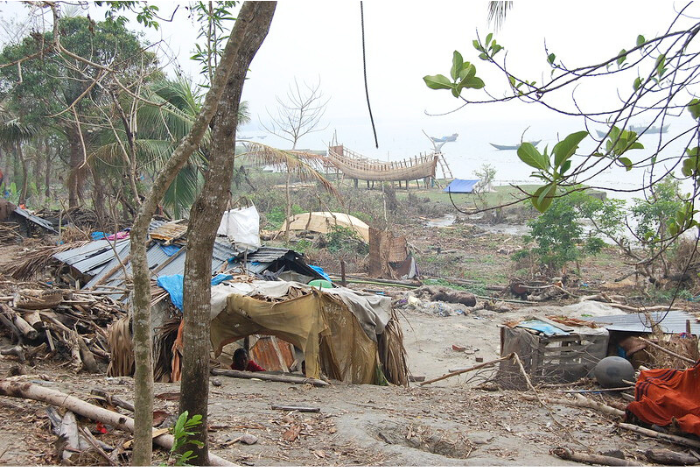The ‘very severe’ cyclonic storm Biparjoy made landfall in Gujarat’s coastal areas on Thursday evening and is now likely to cause heavy rains in parts of Rajasthan
Cyclone Biparjoy made landfall on Jakhau port in Abdasa taluka of Kutch between 6-11 pm on Thursday with sustained wind speed of 115-125 km/hr gusting to 140 km/hr and heavy rainfall. After landfall, Biparjoy reduced from a ‘very severe’ to ‘severe’ category of cyclonic storm.
The cyclone, which had been brewing over the Arabian Sea for several days, has led to at least two deaths and over 20 injured on the Gujarat coast. Communication lines have also been hit in some parts.
According to weather officials, the cyclone is moving towards south Rajasthan. The India Meteorological Department (IMD) said the cyclone is centred towards Saurashtra-Kutch, and will continue to weaken into a depression by Friday evening. A “red” alert has been issued for Jalore and Barmer in Rajasthan, where more than 200 mm rainfall has been predicted.
CarbonCopy previously reported on how rapid intensification of Cyclone Biparjoy is driven by climate change. Roxy Mathew Koll, climate scientist at the Indian Institute of Tropical Meteorology and Lead IPCC Author, further explained, “Sea Surface Temperatures (SST) usually remain high during this time of the year. However, presently they are 2-3 degrees higher than the usual warmer temperatures. This means there is more heat and moisture in the atmosphere, which helps cyclonic storms to maintain their strength for a longer period. The threshold value for the formation of a cyclone is 26°C, but at present SSTs are in the range of 30-32°C. This rise can be attributed to a rise in the ocean heat due to climate change.”
Not just SSTs but there are other factors also that play a role. “The mechanism behind the formation of cyclones does not change but weather conditions are changing. Cyclones have been intensifying at a faster pace in the recent past. The reason behind this is not just an increase in the SSTs but also rising ocean heat content (OHC). Earlier, the system used to take 2-3 days before forming into a tropical storm but nowadays it changes from a depression into a cyclonic storm in just a day. Atmosphere not only interacts with SSTs but also with the entire ocean. It is very evident from research that OHC is changing because of climate change,” said MM Ali, meteorologist and oceanologist, Andhra Pradesh State Disaster Management Authority and Emeritus Scientist G and group director, Atmosphere, ISRO (Indian Space Research Organisation).
“Barrier Layer is a layer between the top and bottom layers of the ocean. This layer is getting stronger with increasing OHC and hence heat is not penetrating to the bottom layer of the ocean. Cyclones follow OHC and track where it is more. That is what we have seen in the Arabian Sea and Bay of Bengal, where usually cyclones tend to weaken as they track near the coast due to increasing wind shear and less moisture. However, these days cyclones tend to hold on to their strength even when they are near the coast. This is a serious threat to the Indian coasts on either side,” added Ali.
Last month, Cyclone Mocha, coming in from the Bay of Bengal had made landfall along the Myanmar-Bangladesh coasts. In India, more than 150 houses were destroyed in Mizoram. Cyclone Mocha, which became the strongest cyclone ever recorded in the north Indian Ocean (including all seasons, both Arabian Sea and Bay of Bengal) in the satellite era (since 1982), led to the loss of 145 lives in Myanmar alone.
Officials are currently estimating the damage caused by Cyclone Biparjoy in India, which after causing massive destruction in Gujarat, is now likely to cause heavy rainfall in parts of Rajasthan.
About The Author
You may also like
Can Private Players Reinvent India’s Forecasting Future?
Polar Geoengineering Projects Unlikely to Stop Melting, May Harm Ecosystem: Report
Inside India’s Struggle to Build a Reliable Early Warning System
Parked Vehicles Significantly Intensify Urban Warming: Report
Quarter of Pledged Emission Cuts at Risk Due to Lack of land-use finance: Report

